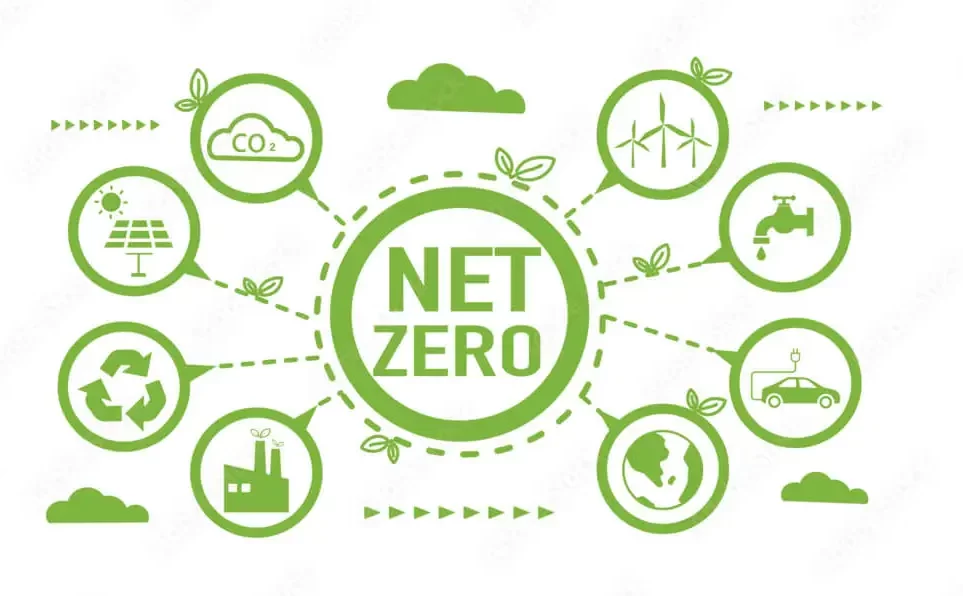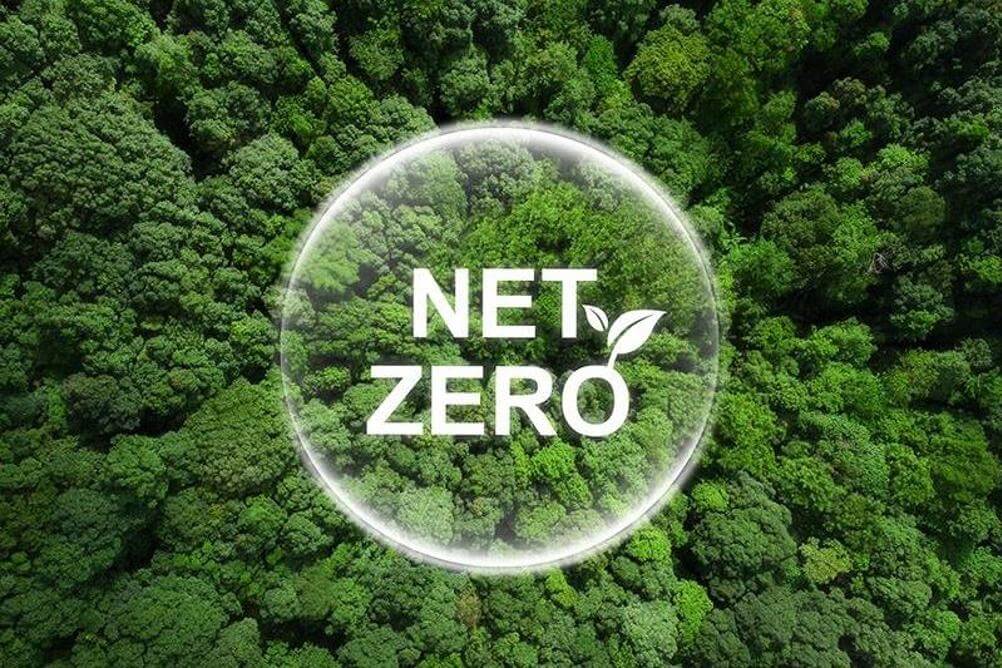How can banks comply with the Net Zero Banking Alliance?
In a world increasingly gripped by the iron fist of climate change, the financial sector has found itself standing at the juncture of responsibility and opportunity. But responsibility is more than awareness—it’s about action and transformation. Banks are not exempt from this global call to arms; they must align their operations with the ethos of the Net Zero Banking Alliance (NZBA), not only to mitigate risk but to evolve as key players in sustainability finance.
The path to net-zero is complex, and for banks, navigating this journey is not just about averting environmental peril—it is also an investment in a better future and in the building of a legacy. This challenging paradigm shift demands an intellectual and confident response, a call to action that is both immediate and grounded in long-term vision. With a strategic and deliberate approach, banks can not only comply with the NZBA but also lead the charge towards a healthier planet and a more sustainable financial future.
Understanding Net Zero Banking

The Net Zero Banking Alliance (NZBA) outlines a clear pathway for banks to align their business models with the objectives of the Paris Agreement, ultimately contributing to the global goal of net-zero greenhouse gas emissions by 2050. This means revolutionizing how they operate, invest, and innovate, integrating sustainability into the very DNA of their organization.
Net-zero banking is more than a reactive strategy; it is a proactive quest that aims to minimize or neutralize all the greenhouse gas emissions resulting from the financial services offered to customers. It’s an approach that encourages a comprehensive review of the environmental impact of banking activities, from the paper usage in branches to the carbon footprint of investment and lending portfolios.
Developing a Sustainable Strategy
At the heart of complying with the NZBA is an all-encompassing and forward-thinking sustainable strategy, which involves six critical steps:
Integrate Carbon Tracking
First, banks need to develop a strategy that includes comprehensive carbon tracking, which involves assessing the carbon footprint of all financial activities, from loans and investments to bank operation expenditure. This integration ensures that all decisions are informed by the environmental impact.
Transparency and Reporting
Transparent reporting not only keeps banks accountable but also builds trust with stakeholders. Clear communication of the bank’s progress or challenges in achieving net-zero is instrumental in maintaining public and regulatory support for sustainability initiatives.
Partner with Sustainability Experts
Collaborating with sustainability experts can provide critical knowledge and insight into best practices for carbon reduction. External partnerships can also foster innovation and the introduction of new, sustainable banking products and services.
Step 2: Measuring the Financed Emissions Baseline
The next step is to measure the baseline emissions financed by the bank. This intensive process may require significant resources but is pivotal for setting realistic reduction targets and developing an effective decarbonization plan.
Projecting the Portfolio’s Momentum Case
A thorough analysis of the ROI and lifespan of current investments is necessary to understand their long-term impact on emissions. This analysis, referred to as the “momentum case,” helps align existing portfolios with the bank’s ambitious long-term sustainability goals.
Selecting a Reference Scenario
Choosing a reference scenario that aligns with the bank’s specific ESG policies and market conditions is crucial. It serves as the benchmark against which the bank measures its progress, ensuring it takes meaningful steps toward net-zero.
Aligning the Portfolio with Reference Scenarios
Once the reference scenario is chosen, the bank must align its investment and lending portfolios with this vision. A gradual shift can be managed over time, directing banking activities toward businesses and projects that support environmentally and socially responsible practices.
Setting the Financed Emissions Target
Determining a financed emissions target is an ambitious but necessary declaration of intent. This allows the bank to quantify its contribution to a low-carbon economy and establish a clear goalpost for success.
Investing in Green Initiatives
To fulfill its commitments to the NZBA, a bank should proactively invest in green initiatives, such as renewable energy projects or ecological restoration efforts. These investments not only contribute positively to the net-zero agenda but can also be financially rewarding.
Funding Sustainable Projects
Directing capital towards sustainable projects and companies is a strategic move that not only reduces climate risk but supports the growth of the green economy. Banks can lead in funding innovations that help societies adapt to and mitigate climate change.
Developing Eco Products
One of the most impactful ways banks can contribute to net-zero is by offering customers eco-friendly products and services. From green mortgages to carbon-neutral investment funds, these financial tools empower individuals and businesses to make sustainable choices while benefiting the bank’s bottom line.
The Sprint Towards Net-Zero: Strategy
The race to net-zero is a marathon, not a sprint. However, banks can apply a sprint strategy to jumpstart their efforts:
Make Green Investments
Banks can use their influence to champion the adoption of cleaner technologies and the growth of sustainable industries by prioritizing green investments. This tactic accelerates the transition to a low-carbon economy.
Develop Eco Products
Innovative financial products offer a dual benefit: they reduce the carbon footprint of the services provided and open new revenue streams. By steering customers towards greener options, banks can amplify the impact of their sustainability efforts. Additionally, offering eco-friendly incentives can attract a new customer base and improve brand reputation.
Partner with Sustainability Experts
Collaborating with experts in sustainability, such as NGOs or academic institutions, allows banks to tap into the latest research and best practices. These partnerships can help drive innovation and inform strategic decision-making towards a net-zero future.
Leveraging Software for Emissions Tracking
In an intellectually invigorating era where data drives decisions, the utilization of emissions tracking software stands as a non-negotiable instrument for visionary leaders committed to carbon reduction endeavors. The commanding benefits of this technology are manifold. Firstly, the precision and efficacy with which it quantifies carbon footprints cannot be overstated, permitting businesses to confidently and accurately account for their environmental impact. Secondly, such software ushers in a new epoch of accountability, enabling organizations to set, track, and report on emission reduction targets with unerring clarity. Furthermore, this digital approach facilitates a streamlined reporting process that aligns with both national and global regulatory standards, thereby reinforcing the organization’s standing as a pacesetter in sustainable practice. Intellectually robust, the analytics provided by emissions tracking software fuel strategic decision-making, equipping businesses with pivotal insights to identify inefficiencies, curtail energy consumption, and innovate towards a thriving, future-proofed economy.
Conclusion: A Call to Carbon Neutrality
As part of a collective enterprise, the transformation to net-zero is not an option—it is an imperative. Banks that embrace the mission of the Net Zero Banking Alliance demonstrate a commitment to their customers, their communities, and the planet.
By adopting a robust and strategic approach, banks can navigate the challenging terrain of emission reduction and emerge as leaders in sustainable finance. The journey to compliance may feel daunting, yet the road to carbon neutrality is paved with innovations that not only offer environmental benefits but also serve as catalysts for growth and resilience.
It is time for banks to rewrite their role in the narrative of climate action, to pivot from being a part of the problem to being a harbinger of solutions. The Net Zero Banking Alliance presents a roadmap—a clear and defined path. It’s now up to the financial sector to chart its course, not just for compliance but for the conservation of our planet and the prosperity of future generations.
Banks, after all, hold the currency of trust. It is time they invest it in the future we all share.
Ecuador's Zero Carbon Programme is a testament to the country's commitment to sustainability, setting a global example. This guide highlights the program's strategies, benefits, and how businesses can align with these green initiatives.
Global Net Zero Programs leading the charge towards sustainability. From Latin America's innovative policies to the EU's Green Deal, this guide illuminates the path to a greener future for businesses, policymakers, and individuals.
Colombia's Carbon Neutral National Program is a beacon for sustainable transformation, blending ambitious goals with actionable strategies. This guide delves into its impact on businesses and society, showcasing the path to a greener future.
Unlock Net Zero strategies in finance to combat climate change. This guide for finance pros offers a roadmap to sustainability, benefits, and innovation.
The pivotal role of Net Zero in transforming the finance sector towards sustainability. This comprehensive guide delves into actionable strategies, pioneering examples, and the future of banking with Net Zero goals.
Glasgow Financial Alliance for Net Zero (GFANZ): A groundbreaking initiative uniting the world's leading financial institutions in the quest for a sustainable future. Learn how GFANZ is steering the global finance sector towards net-zero emissions by 2050, aligning billions in assets with the goals of the Paris Agreement.
Join the transformative journey with the Net Zero Banking Alliance: A global initiative uniting banks in the fight against climate change. Discover how over $130 trillion in assets are being steered towards a sustainable future, fostering innovation, and driving the banking industry towards a net-zero carbon economy.







